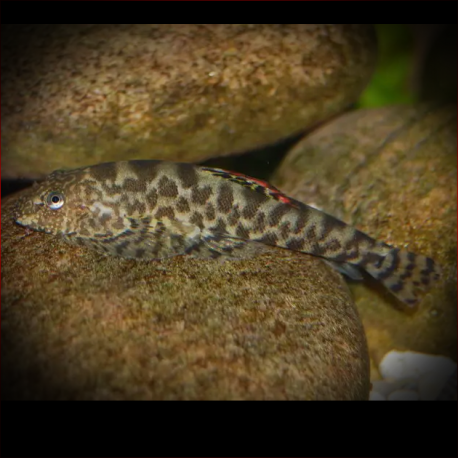More info
Datasheet
| Minimum Tank Size | 70 litres / 18.49 US gallons |
| Maximum Size | 6.0cm / 2.36inches |
| Temperature | 18.9°C / 66.02°F - 23.9°C / 75.02°F |
| Hardness | 1-12ºdH |
| pH | 6.0-7.5 |
Behaviour
The Pseudogastromyzon Myersi is not known to be aggressive, but its environmental requirements limit suitable tankmate choices. They can display territorial behavior when housed with similarly-shaped fish, especially other balitorids. Males are bolder than females, forming territories in different areas of the tank and defending them against conspecific males and similar-looking species. It's advisable to keep a group of six or more to observe their intriguing social dynamics. While many loaches from the Nemacheilidae family are suitable tankmates, some squabbles may occur, particularly with Balitoridae members.
Feeding and Diet
Pseudogastromyzon Myersi are specialized biofilm grazers in the wild, feeding mainly on filamentous Cyanobacteria, stalked diatoms, and some microinvertebrates. While they may accept sinking dried foods in captivity, a diet rich in live or frozen Daphnia, Artemia, and bloodworms is essential for their health. Encouraging algae growth in the tank is highly beneficial, as it provides natural food sources. It's recommended to maintain a separate tank to grow algae on rocks if the main tank lacks sufficient natural algae growth due to herbivorous tankmates.
Reproduction & Dimorphism
In captivity, Pseudogastromyzon Myersi have been successfully bred, exhibiting a non-migratory breeding strategy. Males establish dominance through sparring, displaying breeding tubercles on their heads, and circling females to entice spawning. The female lays eggs in a nest constructed by the male, with both parents in charge of fertilization. Once hatched, the fry remain within the substrate until they are free-swimming. Sexually mature females are larger and less contrasting than males, with the latter developing more pronounced tubercles on their heads.
Habitat and Distribution
Pseudogastromyzon Myersi are commonly found in shallow, fast-flowing, highly-oxygenated headwaters and minor tributaries with rocky substrates in regions such as Hong Kong and Guangdong in southeastern China. They coexist with other species like Liniparhomaloptera disparis, Schistura fasciolata, and Rhinogobius duospilus. Their favorable habitats are characterized by clear, oxygen-rich water supporting abundant biofilm growth.
Aquarium Setup
To create an ideal environment for Pseudogastromyzon Myersi, it is crucial to maintain clean, well-oxygenated water with a high turnover rate. The tank should have a substrate of gravel, sand, or a mixture of both, with water-worn rocks, pebbles, and aged driftwood. Strong lighting to promote algae growth is essential, along with hardy aquatic plants like Java fern and Anubias spp. Regular water changes are necessary, but allowing algae to grow on most surfaces benefits the fish. A tight-fitting cover is recommended to prevent their climbing tendencies.
General Description
Pseudogastromyzon Myersi, commonly known as the 'Chinese hillstream loach' or 'Hong Kong Otocinclus,' is part of the Balitoridae family, with a maximum size of 6.0cm. They exhibit specialized morphology for life in fast-flowing water, with adaptations like flattened bodies and horizontally oriented fins. This species is commonly traded in the aquarium hobby, but distinguishing it from the closely-related P. cheni has been challenging. Native to regions around Guangzhou, these loaches are best kept in groups to observe their natural behavior.

